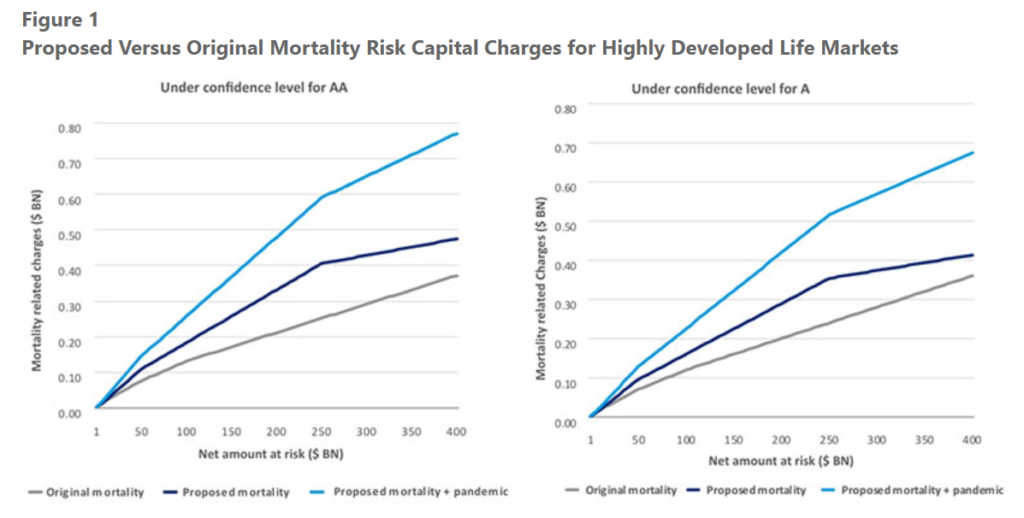Link: https://econpapers.repec.org/article/fipfedhep/y_3a1993_3ai_3asep_3ap_3a12-24_3an_3av.17no.5.htm
PDF link: https://econpapers.repec.org/scripts/redir.pf?u=http%3A%2F%2Fwww.chicagofed.org%2Fdigital_assets%2Fpublications%2Feconomic_perspectives%2F1993%2Fep_sep_oct1993_part2_brewer.pdf;h=repec:fip:fedhep:y:1993:i:sep:p:12-24:n:v.17no.5
Full reference:
Elijah Brewer, Thomas H. Mondschean and Philip E. Strahan
Economic Perspectives, 1993, vol. 17, issue Sep, 12-24
Graphic:

Excerpt:
In most states, coverage under guaranty
funds is $300,000 in death benefits, $100,000 in
cash or withdrawal value for life insurance,
$100,000 in present value of annuity benefits,
and $100,000 in health benefits. Some states
cover all insurance policies written by an insol-
vent firm located in the state; others cover the
policies of residents only. In the case of unallo-
cated annuities such as GICs purchased by com-
panies to fund pension plans, some states cover
up to a certain amount, usually $5 million. Oth-
er states, such as California, Massachusetts, and
Missouri, do not cover GICs.
Because of variations in state guaranty
funds and in the way insolvencies are handled,
the parties bearing the costs of an insurance
failure differ across states. Surviving insurance
companies initially pay their assessments and
claim them as an expense on their federal corpo-
rate income tax return, reducing their federal
income taxes. As companies receive tax credits
in subsequent years, these credits become tax-
able income. As a result, the federal government
bears part of the cost of an insolvency since it
does not fully recover the present value of the
tax decrease granted in the assessment year. In
states with premium tax offsets, however, the
majority of the cost is paid by state taxpayers.
A study of 1990 life/health guaranty fund assess-
ments found that 73.6 percent was paid by state
taxpayers, 8.9 percent by federal taxpayers, and
17.5 percent by the equity holders of the surviv-
ing firms.
Author(s): Elijah Brewer, Thomas H. Mondschean and Philip E. Strahan
Publication Date: September 1993
Publication Site: Economic Perspectives, Chicago Fed

